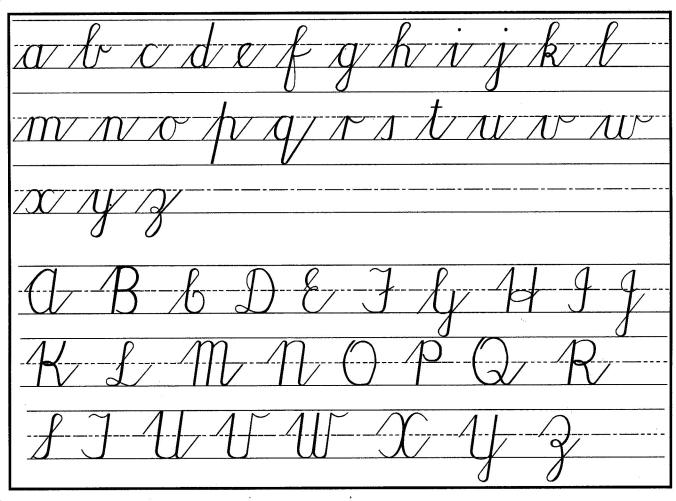Cursive handwriting should be a functional, beautiful, legible, a flowing transition from print writing.  Cursive writing styles differ and some letter shapes are very different from print, requiring re-learning of each lower case and upper case cursive letter. For this reason, some parents chose to teach their children italics which mostly join the letters already learnt in print.
Cursive writing styles differ and some letter shapes are very different from print, requiring re-learning of each lower case and upper case cursive letter. For this reason, some parents chose to teach their children italics which mostly join the letters already learnt in print.
I teach handwriting with laminated charts!
It’s easy! It’s quick! And it works! And it’s fun!
With these charts you can teach neat, correct handwriting in just a few days! It is so much quicker than expensive programs, books or tedious worksheets. And better still, children begin to use their handwriting in a meaningful way within days!
Most handwriting programs offer exercises with practices in the slant, or the joining stroke, and then teach the same shaped letters in groups. This reinforces the techniques needed to learn the new style.
When a child is mature enough to learn cursive, at about 9 to 10-years-old, and they have mastered writing in print and can write at a reasonable speed, then he/she could start learning to write in cursive.
I have found that my children have easily traced over their laminated charts with a whiteboard marker. With daily repetition, they quickly learn how to form the letters and then they use their charts for reference while they do their copywork, dictations or narrations in pencil. And with this system, I have found that they learn the style quickly, and soon begin to write in cursive with ease and confidence.
Once they have mastered writing in pencil without too many errors or erasing mistakes, they can begin to write in pen. My children preferred the smooth flow of gel pens and especially enjoyed using glitter pens for special notes or heading.
My eldest daughter wrote perfectly – flawlessly! She loved doing beautiful cursive handwriting, but it came at a cost – speed. She was slow and she needed much more time to complete her written assignments. As she has matured and her workload has increased, she has needed to lower her standard of perfection, speed up her writing and yet still write legibly. She still can write beautifully, but she does this is for birthday cards or special notes.
Conversely, my 10-year-old needs to slow down, try perfect her writing and try keep the slant and size of each letter consistent. She needs encouragement to slowly write her copywork or dictations.
If your handwriting program is causing unhappiness and reluctance, pop over to download my FREE Handwriting charts.
I have also created a comprehensive Ebook Teaching Cursive step-by-step filled with practical advice, simple instructions, clear examples, step-by-step descriptions on how and where to place letters and how to form cursive letters.
My 20-page Handwriting Tips Booklet is packed with practical tips and activities to teach children to write and covers all developmental stages; pre, early and basic writing skills. It includes helpful activities and fun pre-writing games which help to build up your child’s gross motor strength, develop fine motor control and develop their spatial awareness. Important guidelines to promote correct posture and pencil grip for maximum control and minimum stress while learning to write.
I hope that these downloads help you quickly and easily teach your children to write in cursive.